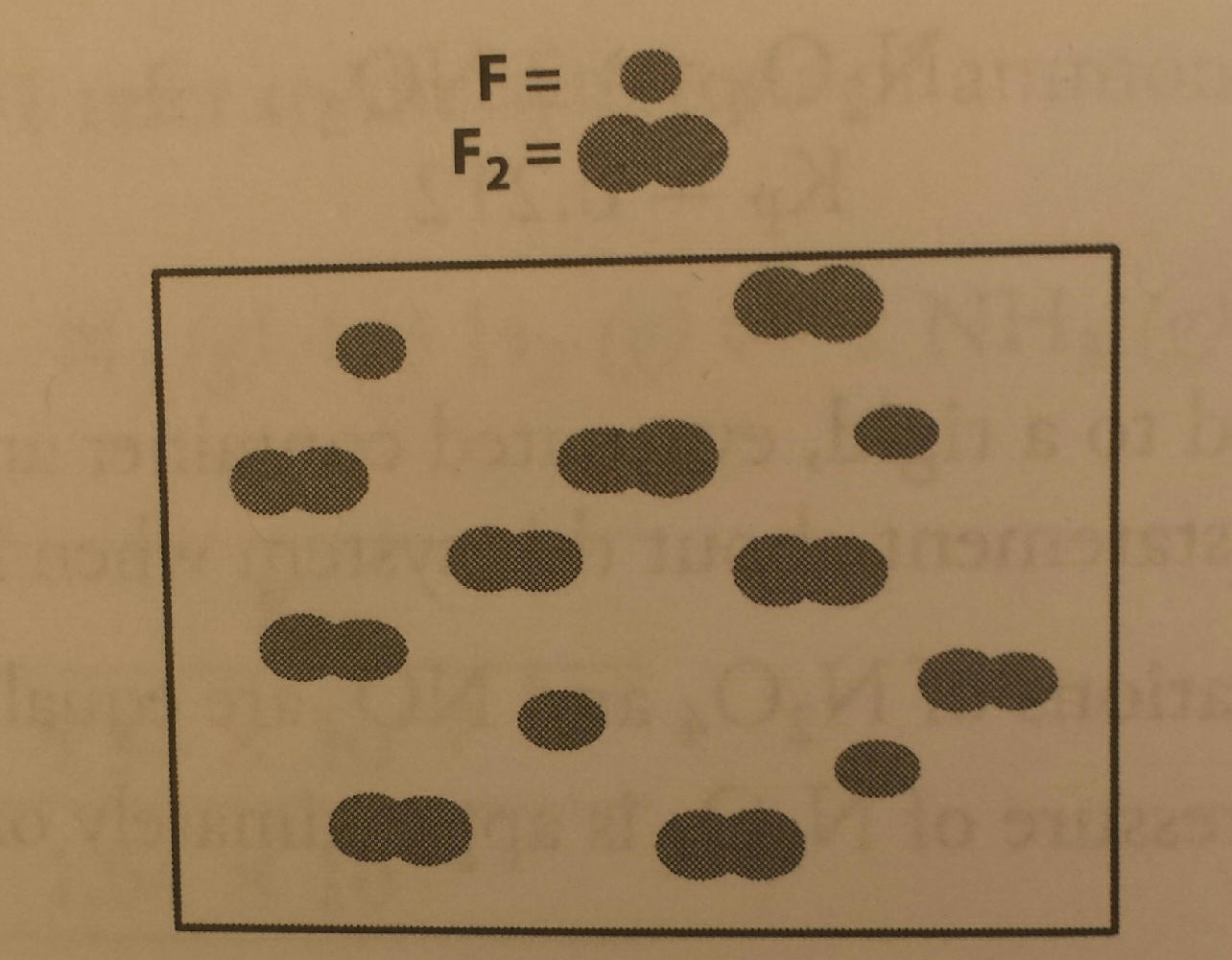
Journal Entry:

The diagram above represents a mixture of F2
and F gases in a 1.0 L container at equilibrium according to the equation F2
(g)↔ 2F (g) at a temperature above 1200K.
Which of the following is true of the equilibrium constant for this reaction at
this temperature?
(A) K < 1
(B) K > 1
(C) K = 1
(D) K cannot be determined because the initial concentrations are not known.
Learning Intentions
We will learn how to determine if a reaction is in equilibrium.
We will learn what Q is for a reversible reaction and how it is calculated.
We will be able to use K to determine whether their are more products or reactants at equilibrium.
Closing Task:
You can write equilibrium expressions for a variety of reactions and use K to determine whether reactant or products are favored in an equation in equilibrium.
Content Standards being covered:
In many classes of reactions, it is important to consider both the forward and reverse reactions. (E.K. 6.A.1)
The current state of a system undergoing a reversible reaction can be characterized by the extent to which reactants have been converted to products. The relative quantities of reaction components are quantitatively described by the reaction quotients, Q. (E.K. 6.A.2)
When a system is at equilibrium, all macroscopic variables, such as concentration, partial pressures, and temperature, do not change over time. Equilibrium results from an equality between the rates of the forward and reverse reactions, at which point Q=K. (E.K. 6.A.3)
The magnitude of the equilibrium constant, K, can be used to determine whether the equilibrium lies toward the reactant side or product side. (E.K. 6.A.4)